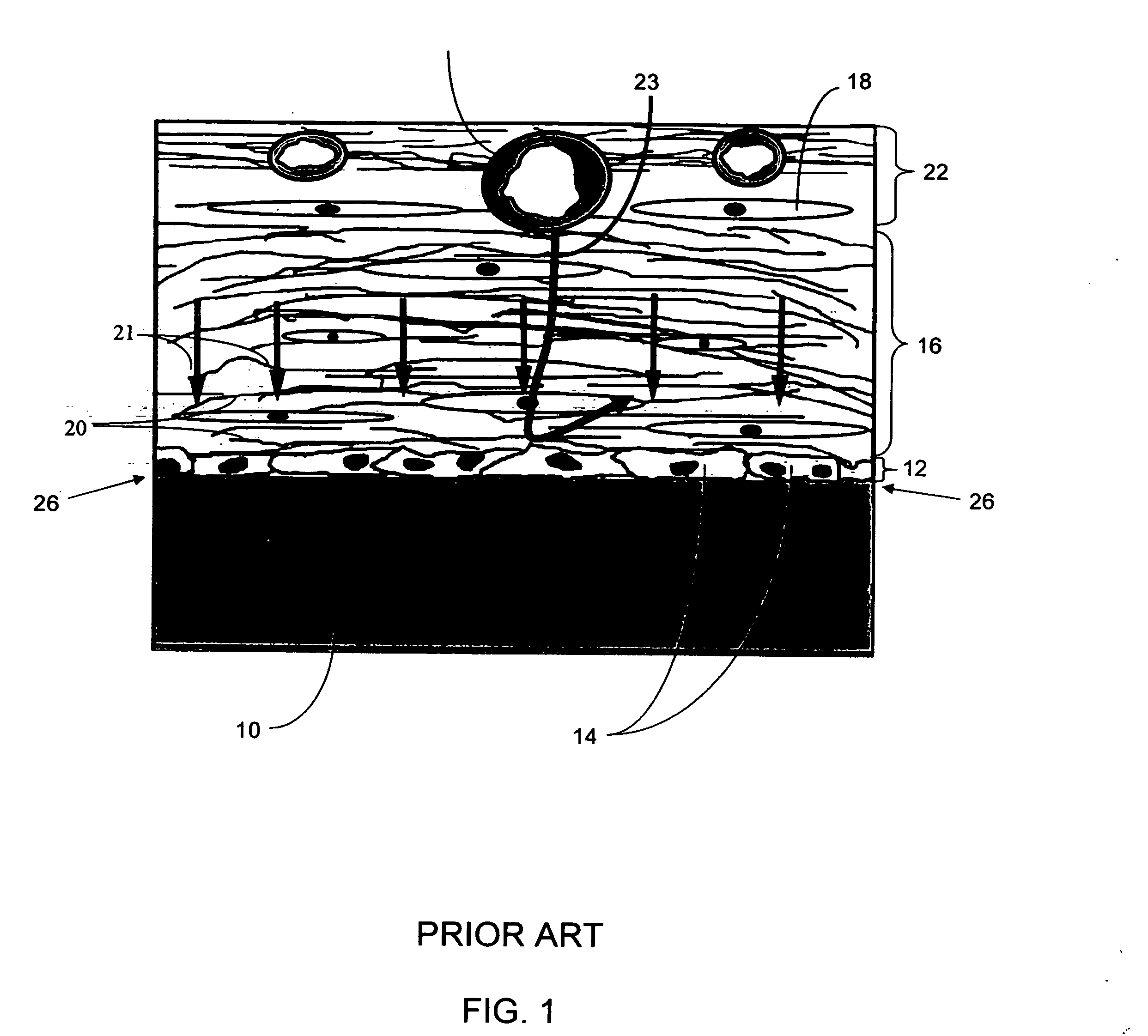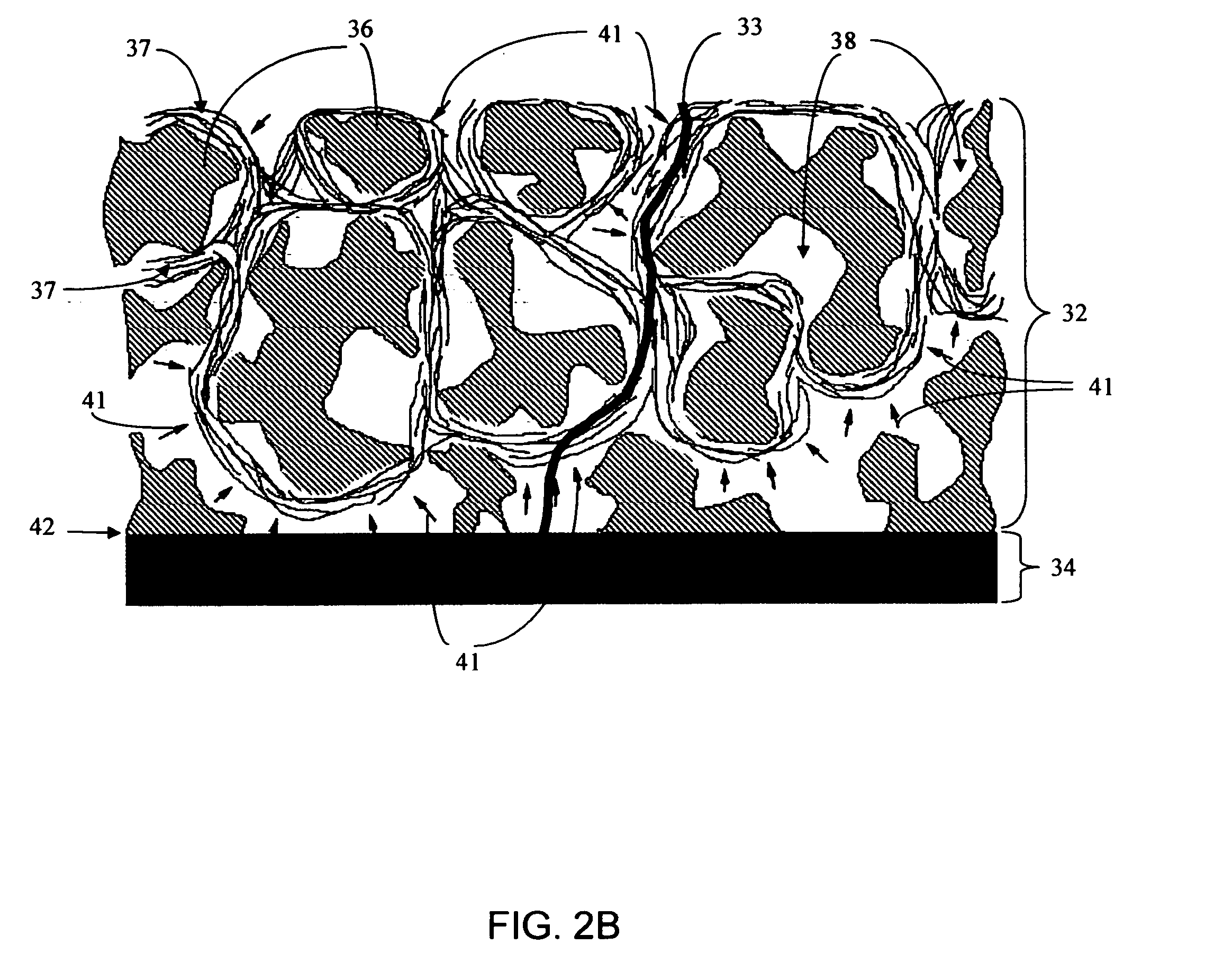Analyte measuring device
- Summary
- Abstract
- Description
- Claims
- Application Information
AI Technical Summary
Benefits of technology
Problems solved by technology
Method used
Image
Examples
example 1
[0319] The polyurethanes are preferably prepared as block copolymers by solution polymerization techniques as generally described in Lyman, J. Polymer Sci. 45:49 (1960). Specifically, a two-step solution polymerization technique is used in which the poly(oxyethylene) glycol is first “capped” by reaction with a diisocyanate to form a macrodiisocyanate. The macrodiisocyanate is then coupled with a diol (or diamine) and the diisocyanate to form a block copolyetherurethane (or a block copolyurethaneurea). The resulting block copolymers are tough and elastic and can be solution-cast in N,N-dimethylformamide to yield clear films that demonstrate good wet strength when swollen in water.
[0320] In particular, a mixture of 8.4 g (0.006 mol), poly(oxyethylene) glycol (CARBOWAX® 1540, Union Carbide), and 3.0 g (0.012 mol) 4,4′-diphenylmethane diisocyanate in 20 mL dimethyl sulfoxide / 4-methyl-2-pentanone (50 / 50) is placed in a three-necked flask equipped with a stirrer and condenser and protect...
example 2
[0322] As previously described, the electrolyte layer, the membrane layer closest to the electrode, can be coated as a water-swellable film. This example illustrates a coating comprising a polyurethane having anionic carboxylate functional groups and hydrophilic polyether groups and polyvinylpyrrolidone (PVP) that can be cross-linked by carbodiimide.
[0323] A coating preparation is prepared comprising a premix of a colloidal aqueous dispersion of particles of a urethane polymer having a polycarbonate-polyurethane (PC-PU) backbone containing carboxylate groups and the water-soluble hydrophilic polymer, PVP, which is crosslinked by the addition of the cross-linking agent just before production of the coated membrane. Example coating formulations are illustrated in Table 1.
TABLE 1ABCDryDryDryWeightWeightWeight%%%WeightSolidsWeightSolidsWeightSolidsPremixPVP148664816020PC-PV2260912488720070Cross-LinkingAgentCarbodiimide3631052010Totals314100322100380100
1Aqueous solution containing 12....
example 3
[0326] The following procedure was used to determine the amount of enzyme to be included in the enzyme layer. It is to be understood that the preferred embodiments are not limited to the use of this or a similar procedure, but rather contemplates the use of other techniques known in the art.
[0327] A starting glucose oxidase concentration of 2×10−4 M was calculated from the enzyme weight and the final volume of the enzyme layer. Thereafter, a series of eight additional membrane formulations was prepared by decrementing enzyme concentration in 50% steps (referred to as a change of one “half loading”) down to 7.8−7 M. Sensor responses were then collected for this range of enzyme loadings and compared to computer-simulated sensor outputs. The simulation parameter set used included previously determined membrane permeabilities and the literature mechanisms and kinetics for glucose oxidase. See, e.g., Rhodes el al., Anal. Chem., 66:1520-1529 (1994).
[0328] There was a good match of real-...
PUM
| Property | Measurement | Unit |
|---|---|---|
| Structure | aaaaa | aaaaa |
| Electrical resistance | aaaaa | aaaaa |
| Molecular weight | aaaaa | aaaaa |
Abstract
Description
Claims
Application Information
 Login to View More
Login to View More - R&D
- Intellectual Property
- Life Sciences
- Materials
- Tech Scout
- Unparalleled Data Quality
- Higher Quality Content
- 60% Fewer Hallucinations
Browse by: Latest US Patents, China's latest patents, Technical Efficacy Thesaurus, Application Domain, Technology Topic, Popular Technical Reports.
© 2025 PatSnap. All rights reserved.Legal|Privacy policy|Modern Slavery Act Transparency Statement|Sitemap|About US| Contact US: help@patsnap.com



